JBL Flip 6 vs Sony ULT Field 1: which Bluetooth speaker is better?
The battle of the burrito-shaped Bluetooth buddies

Bluetooth: 5.1
Features: IP67 rating, PartyBoost speaker pairing, aux-in connectivity
Battery life: 12 hours
Dimensions: 17.8 x 6.8 x 7.2cm
Weight: 550g
The five-star Flip 6 is a terrific speaker that honours its predecessor's Award-winning legacy while adding some welcome sonic and design elements in the process. With enjoyable sound, enhanced features and a slimline but still durable design, it earns its five-star plaudits and the right to carry the Flip name.
For
- Excellent clarity and sonic precision
- Punchy bass for size
- Useful equaliser feature
Against
- More critical of recording and source quality
- Tough competition from excellent JBL Charge 5
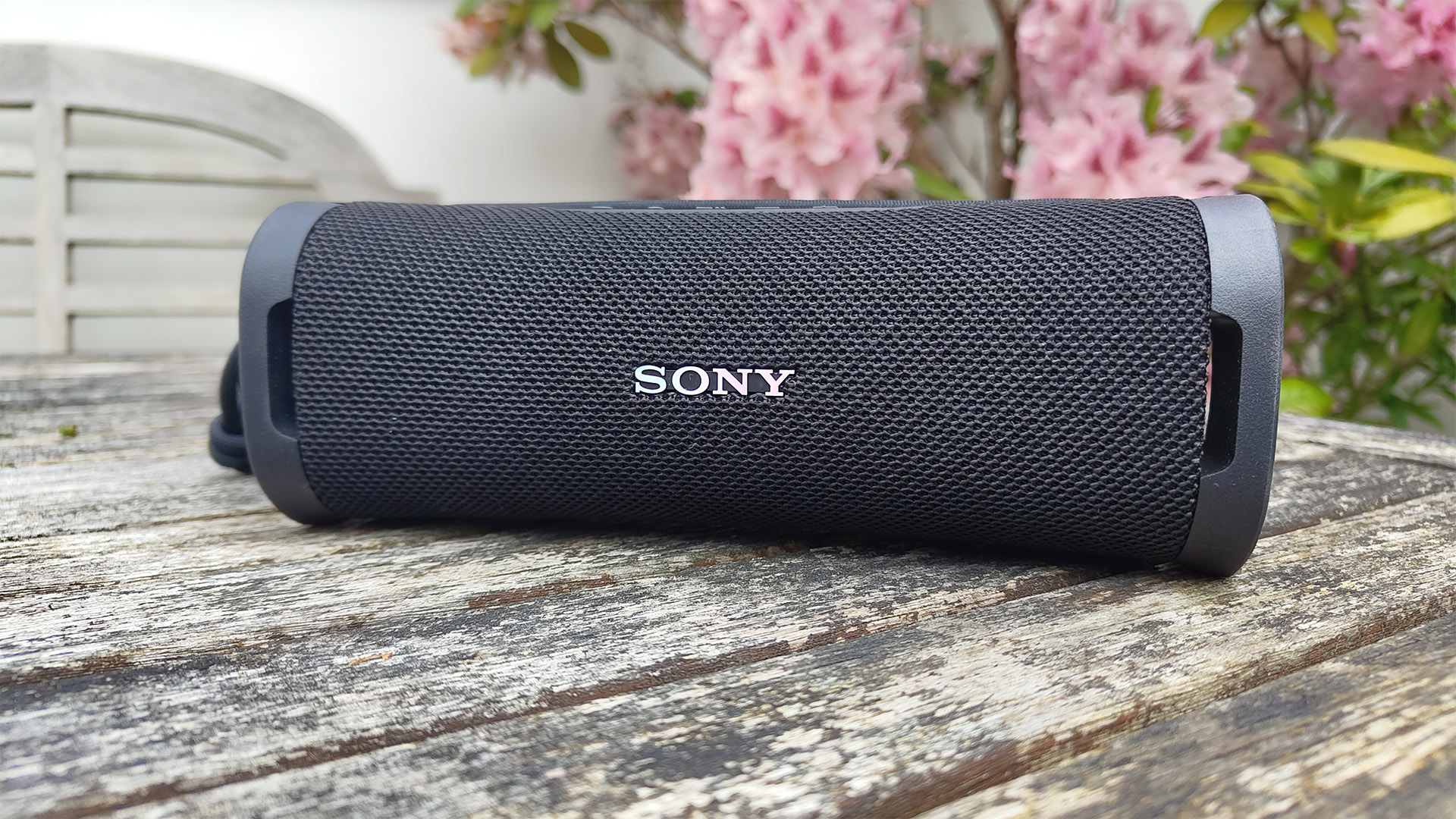
Bluetooth: 5.3
Features: ULT Power Sound, hands-free calling, IP67 rating, Stereo Pair, Fast Pair (Android)
Battery life: 12 hours
Dimensions: 20.6 x 7.6 x 7.5cm
Weight: 650g
The feature-heavy Sony ULT Field 1 gives the JBL Flip 6 some tasty competition. You may or may not be sold on its contrasting sound profiles, but the Field 1's versatility, rugged build and additional features see it challenging the current class leader at this price point.
For
- Bright, clear character
- Solid, rugged build
- Comfortable at higher volume levels
Against
- Lacking midrange robustness of class-leading rivals
- Can sound thin without “Power Sound” boost
- Occasional top-end harshness
For the past few years, JBL has been sitting pretty at the top of the Bluetooth speaker tree. Its superb Charge 5 is a multiple What Hi-Fi? Award-winner, while the Xtreme 3 offers a big step up in size and performance if you're willing to spend a little extra. The company's Flip line, meanwhile, has been a roaring success, with the five-star Flip 6 continuing the stellar legacy built by the Award-winning Flip 5 stalwart.
JBL, however, has competition. Sony wants a piece of the Bluetooth speaker pie, and it's planning on carving itself a big old slice using (not literally) the new Sony ULT Field 1, a speaker that, thanks to its multiple similarities with the Flip 6 in terms of price, form and features, is on a collision course with one of the best portable party starters around.
It's the battle of the Bluetooth burritos, but which is the tastier performer when it comes to delivering that all-important sonic spice?
JBL Flip 6 vs Sony ULT Field 1: price
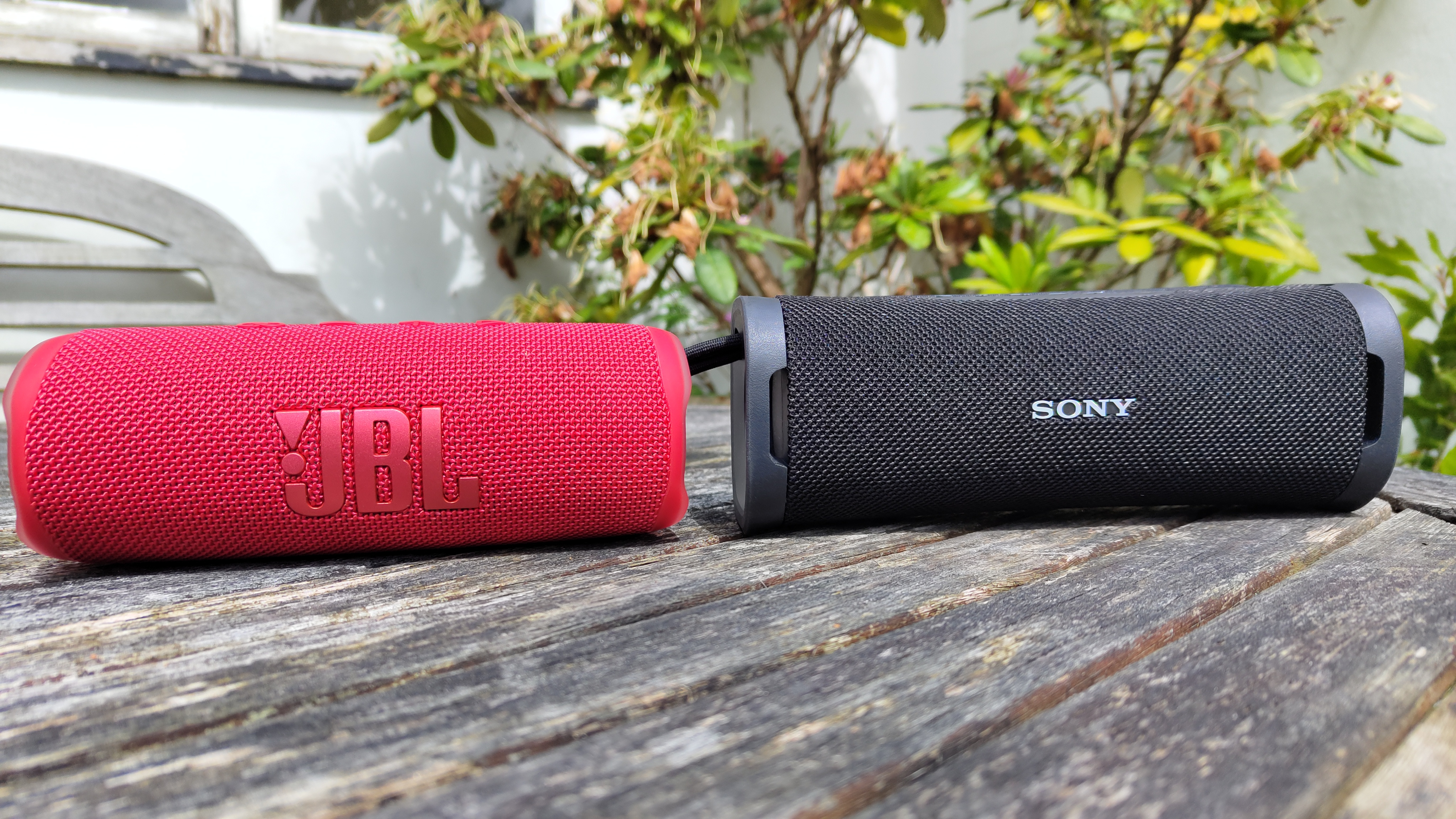
The Sony ULT Field 1 officially launched at £119 / $130 / AU$229, but at the time of writing we’ve seen that fall to £100 in the UK and AU$185 in Australia. At this affordable level, the Sony is on a collision course with the JBL Flip 6 (currently sitting at £99 / $100 / AU$150) and the larger Charge 5 as it sits around the £130 / $125 / AU$200 mark.
The Flip 6 did launch at £130, but its increasing age is seeing that price drop substantially since release as deals start to creep in. We were surprised to see the ULT Field 1 lower its price tag almost immediately since its recent launch, and it remains to be seen whether this is just an introductory discount or the new standard rate. As things stand right now, though, there's barely a penny to separate the two.
**Winner: Tie**
JBL Flip 6 vs Sony ULT Field 1: design
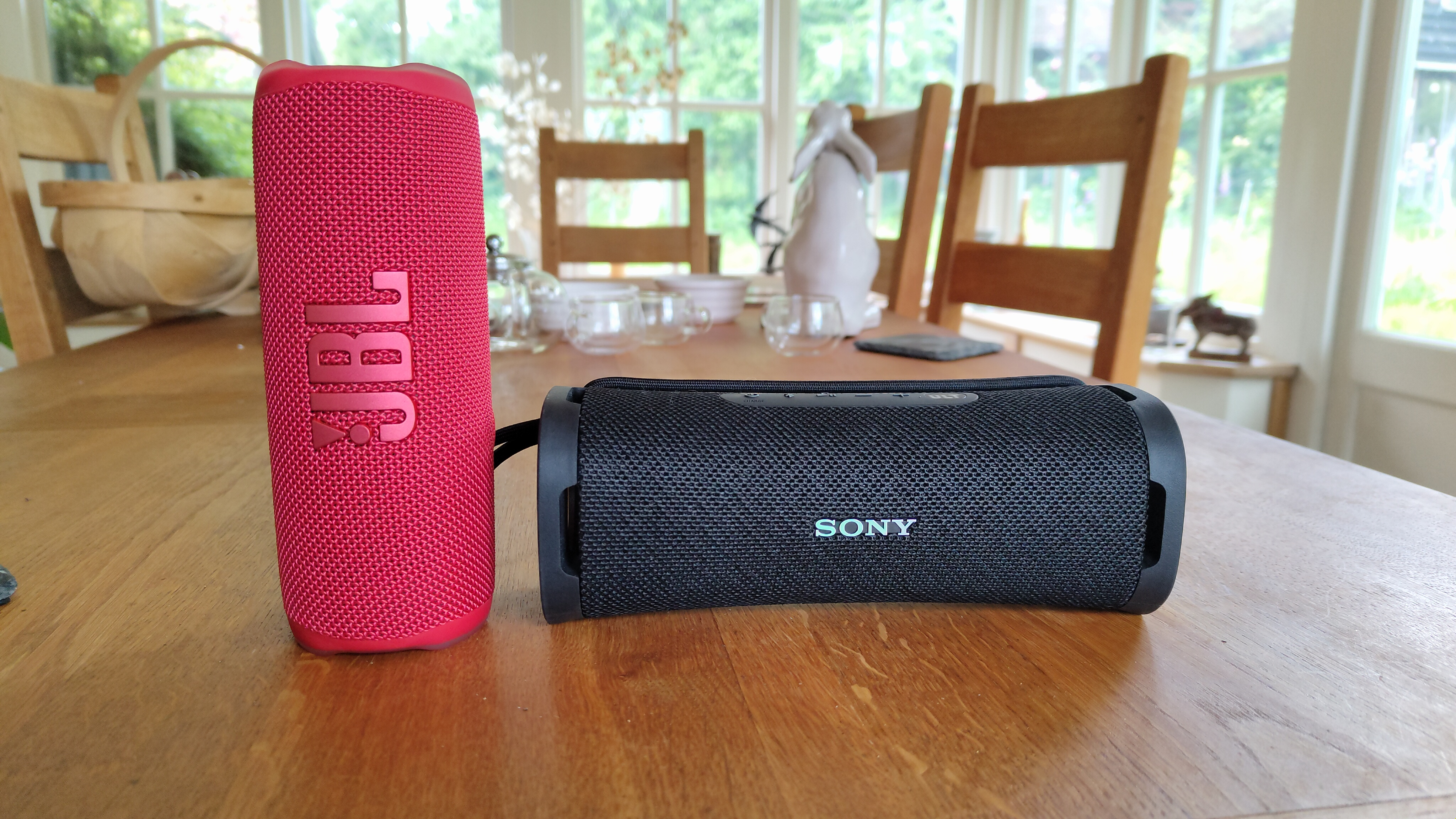
We're pleased to report that whichever of these two portable players you pick, you'll be treated to a speaker that feels rugged, reliable and supremely well-made. Sony and JBL rarely drop the ball when it comes to the care and attention they give to constructing portable products, a trend that continues with both of our contending candidates.
Taking multiple cues from the older (but still ongoing) Flip 5, the sixth-generation Flip has helped to set the design standard at this level. It may be small, but the Flip 6's compact dimensions only add to its charms – size may often matter in getting better sound, but JBL hasn't sacrificed any care and attention over the form and functionality of one of its smallest speakers.
Overall, it feels weighty and substantial in hand (imagine a decent density of rice and beans if we're continuing the burrito analogy), with a tightly woven mesh exterior that, during our extensive time with our sample, we can confirm is rugged, durable and surprisingly resistant to wear or even discolouration. The Flip 6 uses the same power, Bluetooth button and USB-C port layout as the Flip 5, but this time mounted on a smaller rubber panel for added convenience.
Speaking of rubber, the JBL sports a small rubber foot beneath the panel to ensure it doesn’t actually slip off your desk, although we do find that it's more susceptible to rolling off surfaces than the slightly flattened edges of the Sony Field 1. The Flip 6's wrist strap is a continuous loop of cord rather than two strands fastened with a fancy knot, with a handy slider for better security around your wrist.
Like the Flip 6, the Sony ULT Field 1 is a nicely well-made piece of portable tech. It’s longer and a little fatter than the neat, cylindrical outline of the JBL, though with more flattened, squared-off sides that prevent it from being so roll-happy. That said, the Field 1 doesn't offer any rubberised underside, although its squarer form factor means that this isn't a particularly deal-breaking issue. What you may notice is that the Field 1 is around 100g heavier than the JBL, something that can make a real difference if you're planning on tossing your speaker in your bag and making it your erstwhile travel buddy.
The Sony really feels tough, with its Japanese maker contending that the Field 1’s comprehensive shockproofing allows it to suffer knocks and drops from over a metre high without suffering serious damage. We weren't that keen on throwing around our test sample, but we did put the speaker's JBL-equalling IP67 rating to the test on a rainy British weekend and discovered no effect on performance after 15 minutes in a relatively heavy downpour. Better yet, a rubber cap over the speaker’s USB-C charging port assuages fears of water or dust getting into the speaker’s inner workings and wreaking havoc with its vital circuitry.
Elsewhere, the Field 1's ruggedness and solidity help it keep up with the current class leader. The Sony's’ exterior mesh is tightly woven and feels as hardy and durable as JBL's effort, while the unit’s solid plastic sides seem sturdy enough to handle the sorts of bumps and knocks that an outdoor-oriented speaker could suffer. Like the JBL, the newer arrival comes with a carry strap, albeit one that's thicker, longer and just as simple to adjust. We'd like a few more colour options (just four for the Sony in comparison to the eight for the JBL), but that's a minor issue in the grand scheme.
**Winner: Tie**
JBL Flip 6 vs Sony ULT Field 1: features
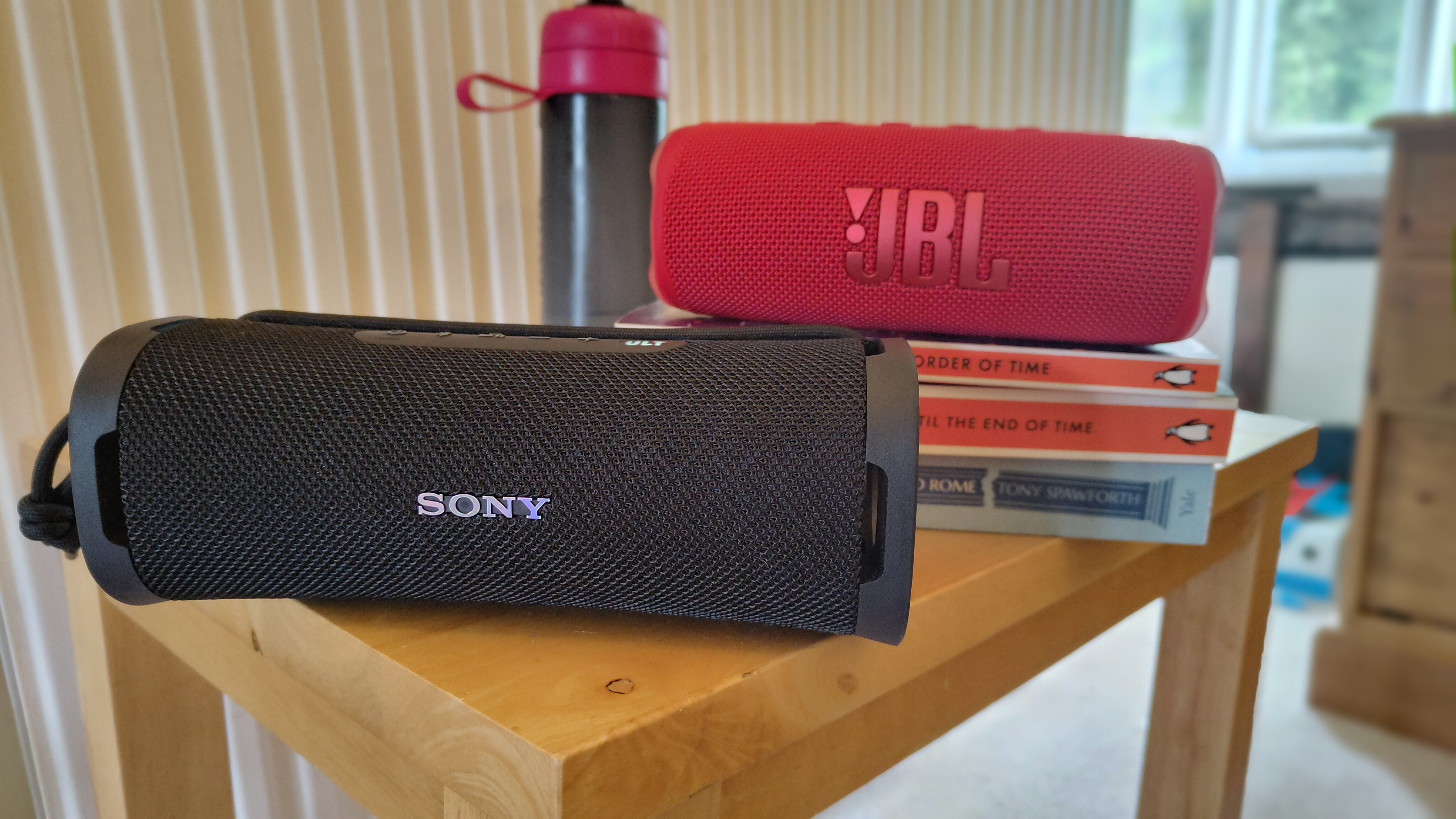
The Flip 6's big party piece, pun intended, is its PartyBoost compatibility. If you so choose, you can locate other JBL PartyBoost-enabled speakers (a Flip 5, say) and connect them in mono ‘party’ mode, or stereo if you have another Flip 6. That's handy if you want to boost your sound without incurring a huge extra cost, and it's also worth noting that you can have two devices hooked up to the Flip 6 simultaneously without the need to constantly pair and re-pair your sources.
The Field 1, meanwhile, offers stereo pairing with a model of the same type (i.e. another Field 1), although it doesn't seem that mono linking up with other Sony speakers is currently available. There's no aux in for the Sony speaker, though, something you do get with the Flip 6, a bonus for the latter contender if you're somebody who still likes to plug a source directly into your chosen player.
What the Field 1 does give you is access to the Sony Music Centre app, a pretty plain and utilitarian platform from which you can manage your stereo pairings, adjust your EQ settings and check your speaker's battery life. It's not a bad service by any stretch, but we prefer the more involved, easy-to-use service offered by JBL's rather fancy One app.
In terms of battery life, there's nothing to call it between the two. Both offer 12 hours of charge time, enough to get you through most outdoor excursions before your battery runs out and your tunes dry up. The Field 1 does provide you with hands-free voice calling and Bluetooth Fast Pair for Android devices, two rather attractive bonuses that the Flip 6 simply cannot manage.
If the JBL's trump card is its PartyBoost button, the Sony's comes in the shape of its much-vaunted "Power Boost" feature, a common aspect within the ULT range which bolsters up the lower-end to give your music a good deal more bassy wallop. It's a so-called boon that we found utterly overbearing when deployed through the ULT Wear over-ear headphones, but here it's something that makes a lot more sense and, as we stated in our review, "rounding out the speakers’ naturally lean character and making it sound more balanced in larger rooms or outdoor spaces".
In total, the Field 1's stacked feature set sees it edge a win here over its stellar JBL rival.
**Winner: Sony ULT Field 1**
JBL Flip 6 vs Sony ULT Field 1: sound quality
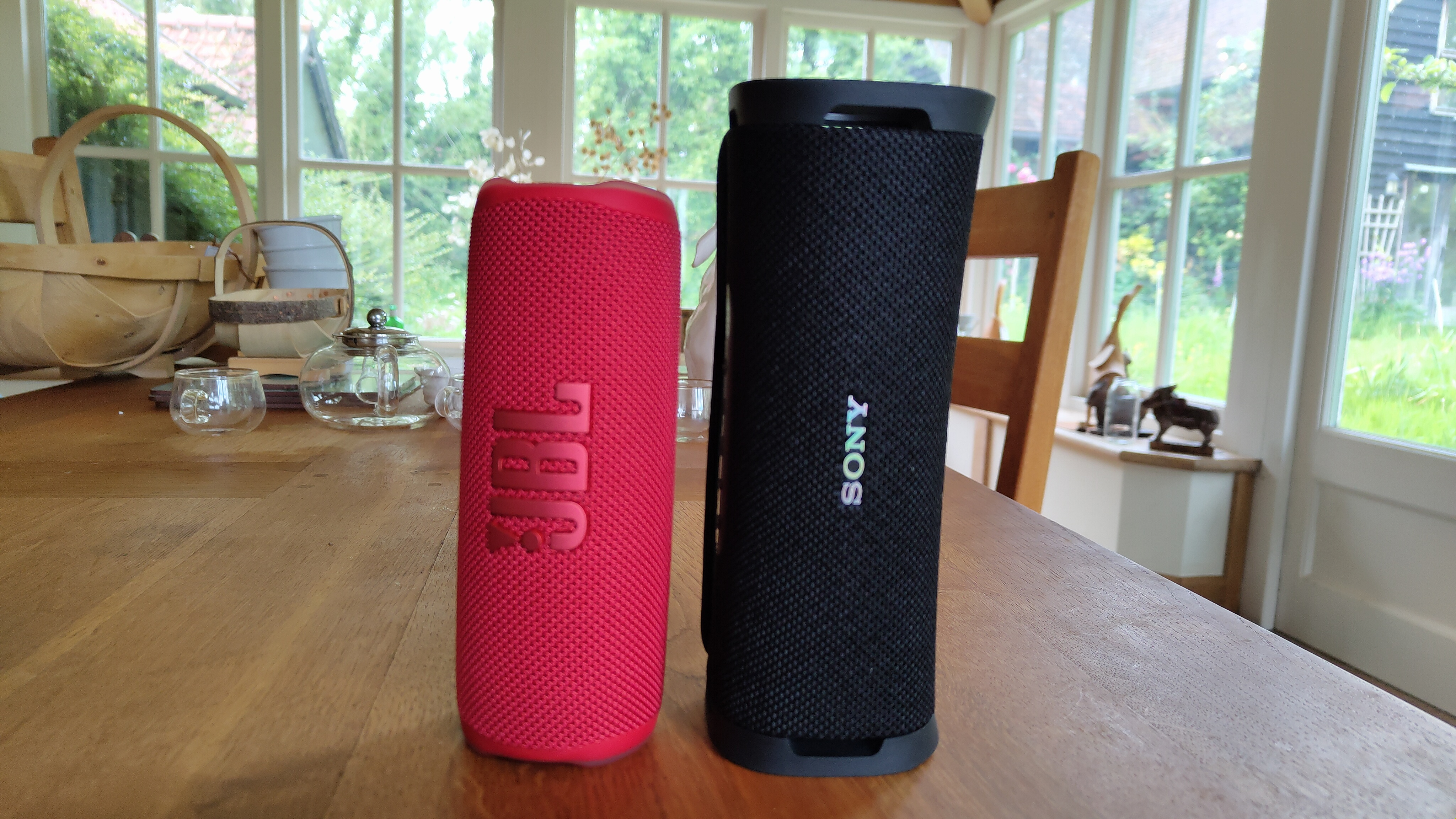
The Flip 6 is the sonic standard-setter at this price and a quick refresher listen performed side-by-side with the more recent Sony reminds us why we hold the JBL in such high esteem. Despite its meagre dimensions, the US-made speaker packs weight, energy and substance across the full range of frequencies, all while implementing a snappy, full-bodied low end that never falls into the trap of adding more bass without the necessary refinement to go with it.
It's the cohesion of the Flip 6 that we really love. Larger, more expensive Bluetooth models can muddle things up in a mess of out-of-kilter percussion, foggy guitars and misplaced bass, but the JBL is adept at keeping things as taut and tight as a freshly Botoxed forehead. Sometimes it can expose the harshness of crummy recordings to their detriment, but if your source material is up to par you shouldn't feel the need to worry.
The Field 1, conversely, is a different beast. With its choice of two main sonic modes – Power Sound on or Power Sound off – you're essentially getting two very different speakers, with the "off" profile giving a peppier, lighter profile in contrast with the burly oomph provided by switching on that big ULT button.
As we made clear in our review, though, the Field 1 can't quite topple the Flip 6's impressive sense of sonic togetherness. As we stated, "The Flip 6 of pulling multiple textures, elements and tones together into a unified whole, and while the sound it produces is never colossal, the way it presents it always sounds composed and supremely well-curated".
The Field 1 offers a fine attempt, yet it can't match the dimensionality and solidity of the deeply impressive sixth-gen Flip. What you do receive is more detail and texture with the Sony speaker, plus a decent amount of general versatility. We let the Sony loose on the full gamut of musical styles and genres and, while it suffers a few limitations due to its size and price, its willingness to bend and flex depending on the music played remains impressive.
For us, though, the Field 1 just isn't quite on the JBL's level, lacking in true dimensionality and opening the door for the Flip 6 to jump in and steal the show. JBL’s five-star stunner remains our Bluetooth buddy to beat when it comes to sound, even though there’s loads to like about the ULT Field 1's detail, propulsion and, if you so want, forceful, muscular bass.
**Winner: JBL Flip 6**
JBL Flip 6 vs Sony ULT Field 1: verdict
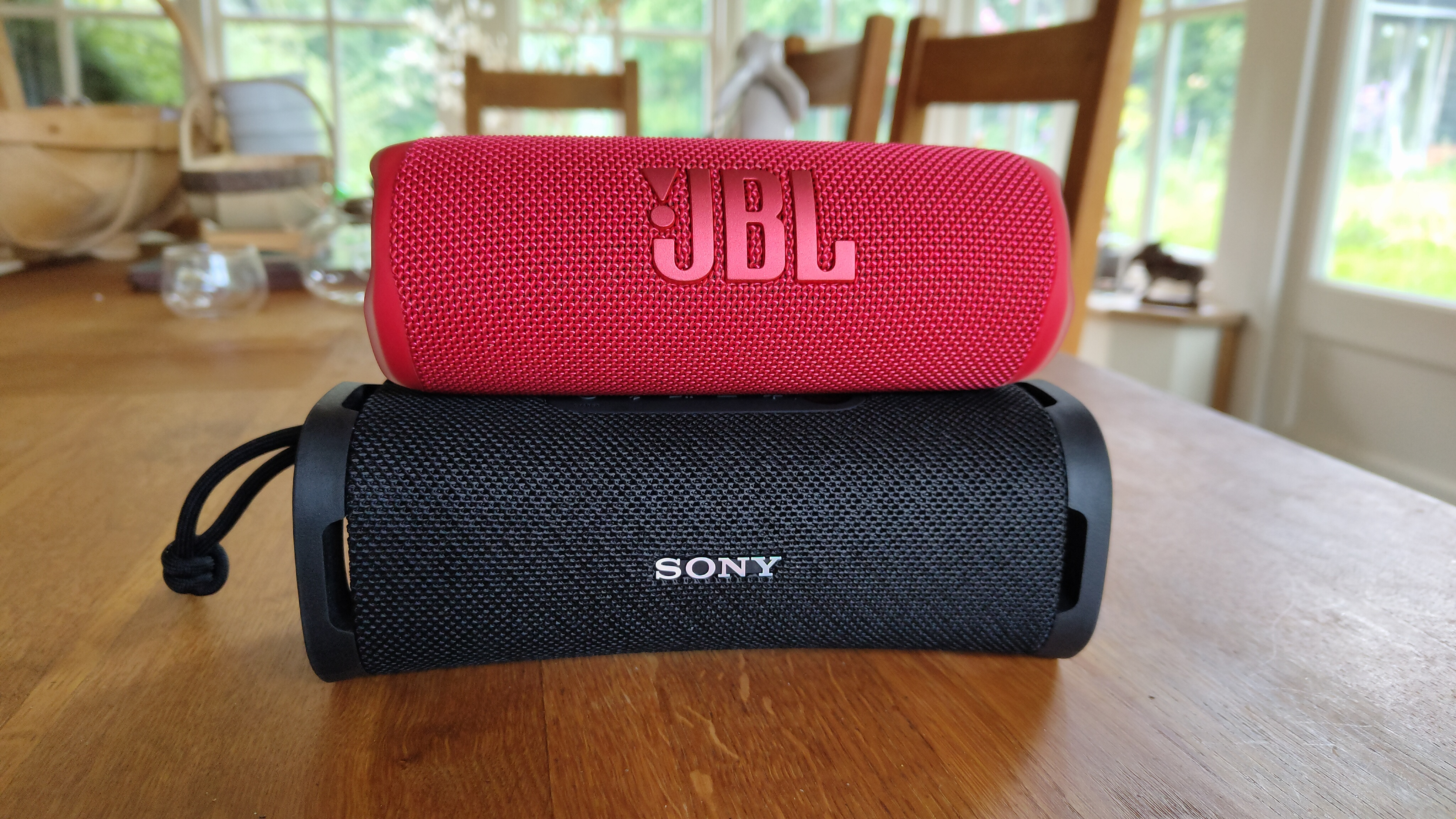
The excellent Flip 6 boasting a whole star more than its Sony competitor may have you thinking that this is an open-and-shut case, but as we hope the above comparisons have demonstrated, there are many more elements to be considered here beyond a final numerical value.
In simple terms, we prefer the sonic delivery of the Flip 6 and if your only concern is getting the best audio performance for your money, then the JBL speaker is the one for you. We like its cohesiveness, weight, solidity, sense of timing and general musicality, and while the Field 1 offers a fine effort, we didn't find a way of listening to the Sony that felt as well-rounded and comprehensive as that offered by the Flip 6.
That said, some might prefer the more detailed approach of the Sony and find more value in the greater number of strings it has to its feature-laden bow. You won't be disappointed by its rugged design and additional features, and it remains a solid – if not the best – listen at this price.
MORE:
Read our original JBL Flip 6 review
And our Sony ULT Field 1 review
Here's what we want from the much-anticipated JBL Flip 7
Our pick of the best Bluetooth speakers for every budget
More into Sonos? Sonos Move vs Sonos Move 2: what are the differences?
Get the What Hi-Fi? Newsletter
The latest hi-fi, home cinema and tech news, reviews, buying advice and deals, direct to your inbox.

Harry McKerrell is a senior staff writer at What Hi-Fi?. During his time at the publication, he has written countless news stories alongside features, advice and reviews of products ranging from floorstanding speakers and music streamers to over-ear headphones, wireless earbuds and portable DACs. He has covered launches from hi-fi and consumer tech brands, and major industry events including IFA, High End Munich and, of course, the Bristol Hi-Fi Show. When not at work he can be found playing hockey, practising the piano or trying to pet strangers' dogs.
